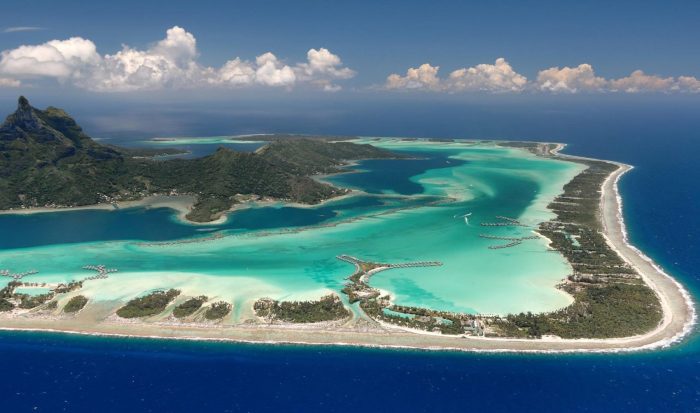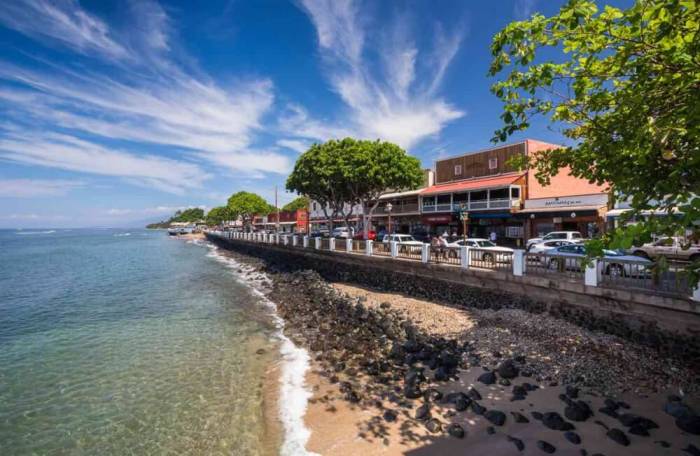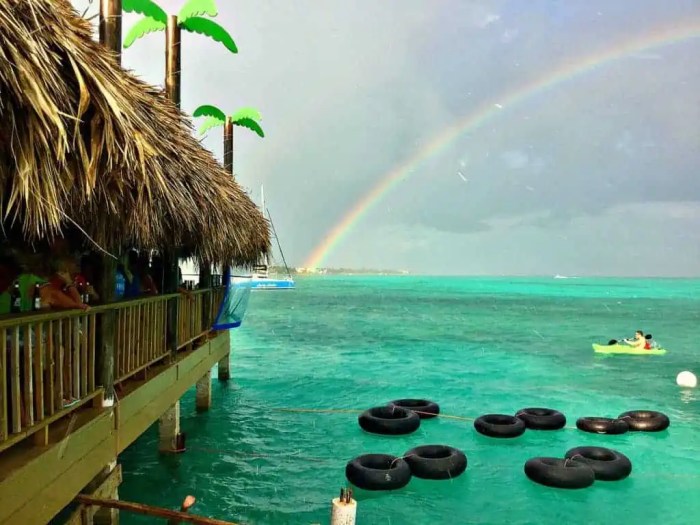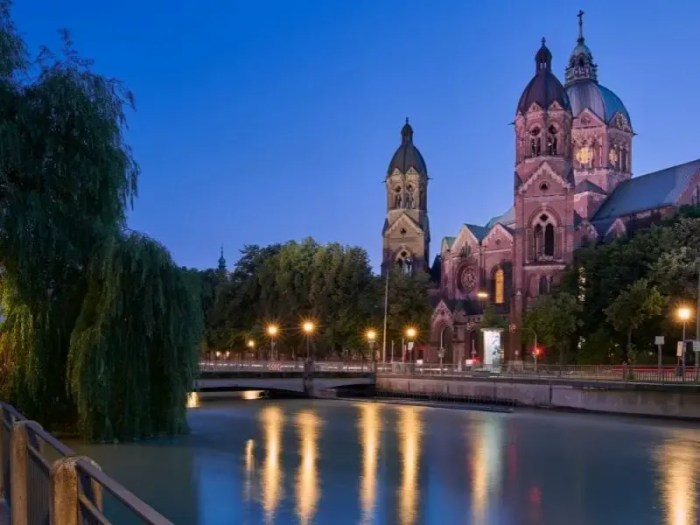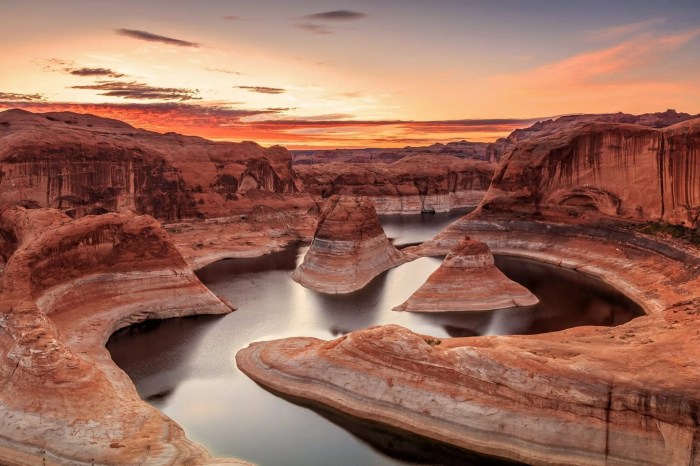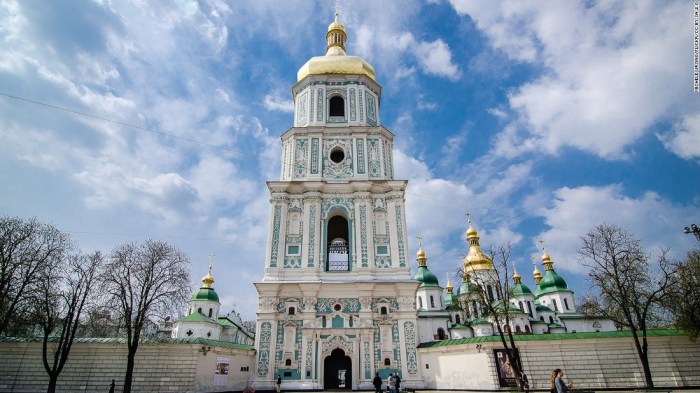Top 10 Places To Visit In French Polynesia
Top 10 Places To Visit in French Polynesia: Picture this: turquoise lagoons, lush volcanic peaks, and pristine beaches stretching as far as the eye can see. French Polynesia is a dream destination, offering a vibrant mix of Polynesian culture, luxurious resorts, and thrilling adventure.
From the iconic overwater bungalows of Bora Bora to the laid-back charm of Huahine, this island paradise has something for everyone. Whether you’re seeking relaxation, adventure, or a cultural immersion, French Polynesia is guaranteed to leave you breathless.
This guide will take you on a journey through the top 10 places to visit in French Polynesia, showcasing the unique beauty and unforgettable experiences that await you. We’ll explore the iconic landscapes, vibrant culture, and diverse activities that make this archipelago a true paradise.
So, grab your swimsuit, pack your sense of adventure, and get ready to discover the magic of French Polynesia.
Introduction
French Polynesia is a captivating archipelago nestled in the heart of the South Pacific. This collection of 118 islands and atolls boasts breathtaking beauty, vibrant culture, and a unique geographical location that makes it a true paradise. From the volcanic peaks of Tahiti to the pristine beaches of Bora Bora, French Polynesia offers an unforgettable travel experience for every type of adventurer.
Whether you’re seeking an idyllic escape, an exhilarating adventure, or a glimpse into Polynesian culture, French Polynesia has something to offer.
Top 10 Places to Visit in French Polynesia
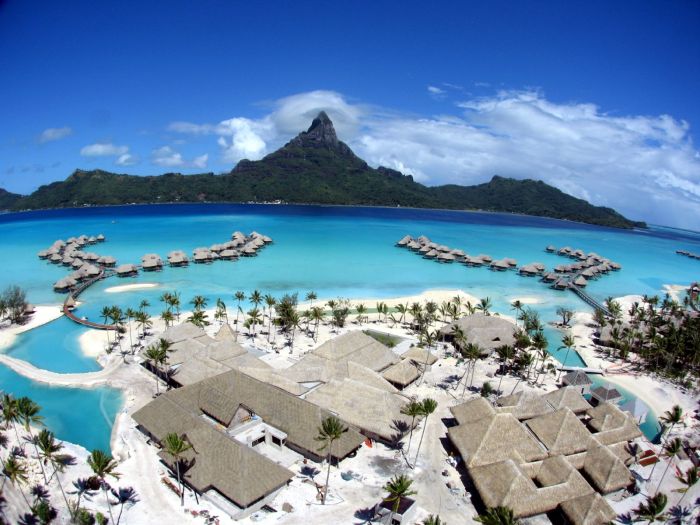
French Polynesia is a paradise in the South Pacific, renowned for its breathtaking beauty, vibrant culture, and luxurious resorts. This collection of islands, atolls, and motus (islets) offers a diverse range of experiences, from exploring volcanic landscapes and pristine lagoons to immersing oneself in the rich Polynesian heritage.
This guide will explore ten of the most captivating destinations in French Polynesia, showcasing their unique attractions, activities, and cultural significance.
Tahiti
Tahiti, the largest island in French Polynesia, is a captivating destination that embodies the essence of the South Pacific. It’s renowned for its iconic landscape, vibrant culture, and luxurious resorts. Tahiti’s landscape is a testament to its volcanic origins, featuring dramatic peaks, lush valleys, and stunning beaches.
Mount Orohena, the island’s highest point, dominates the skyline, while the verdant valleys are home to cascading waterfalls and cascading waterfalls and vibrant flora. The island is fringed by white-sand beaches and turquoise lagoons, perfect for swimming, snorkeling, and diving.Tahiti’s vibrant culture is deeply rooted in Polynesian traditions, music, and arts.
Traditional dance performances, known as “ori Tahiti,” showcase the grace and rhythm of Polynesian culture. The island is also home to numerous art galleries and craft markets, where visitors can purchase handcrafted souvenirs and immerse themselves in the artistry of the Tahitian people.
Planning Your Trip to French Polynesia
Planning a trip to French Polynesia involves considering various factors, including the best time to visit, transportation options, accommodation choices, activities, and budgeting. This comprehensive guide will provide you with all the essential information to plan your dream vacation to this tropical paradise.
Best Time to Visit
The best time to visit French Polynesia depends on your preferences for weather, crowds, and events. French Polynesia experiences two distinct seasons: the wet season (November to April) and the dry season (May to October).
| Season | Weather | Advantages | Disadvantages |
|---|---|---|---|
| Wet Season (November to April) | Warm and humid with frequent rainfall, occasional cyclones | Lower prices, fewer crowds, lush greenery | Rain can disrupt outdoor activities, cyclones can be dangerous |
| Dry Season (May to October) | Warm and sunny with minimal rainfall | Perfect weather for swimming, snorkeling, and diving, ideal for outdoor activities | Higher prices, more crowded, limited marine life visibility |
Getting There
French Polynesia is accessible by air, with international flights arriving at the main airport in Papeete, Tahiti (PPT). Major airlines like Air Tahiti Nui, Air France, and United Airlines offer direct flights from various international airports, including Los Angeles, San Francisco, Tokyo, and Paris.
French Polynesia is a paradise for beach lovers, offering stunning lagoons, vibrant coral reefs, and luxurious overwater bungalows. If you’re looking for a more adventurous trip, though, you might want to check out the Top 10 Places To Visit in New Zealand.
From the glaciers of the Southern Alps to the geothermal wonders of Rotorua, New Zealand offers a unique blend of natural beauty and adrenaline-pumping activities. But if you’re craving that tropical vibe, there’s no place quite like French Polynesia.
- Booking Flights:Booking flights in advance, especially during peak season, is highly recommended. Consider using flight comparison websites to find the best deals and utilize flexible travel dates for greater price flexibility.
- Airport Procedures:Upon arrival at Papeete Airport, you will need to clear customs and immigration. Be prepared for potential queues, especially during peak tourist seasons. It’s advisable to have all necessary documents readily available, including your passport, visa (if required), and flight confirmations.
Accommodation
French Polynesia offers a wide range of accommodation options to suit every budget and preference. From luxurious overwater bungalows to budget-friendly guesthouses, there’s something for everyone.
- Luxury Resorts:Luxurious resorts in French Polynesia offer unparalleled amenities, including private beaches, infinity pools, world-class dining, and spa services. Popular choices include the Four Seasons Resort Bora Bora, The Brando, and Le Taha’a Island Resort & Spa.
- Mid-Range Hotels:Mid-range hotels provide a comfortable and affordable option for travelers seeking a balance between luxury and affordability. Examples include the InterContinental Resort Tahiti, the Sofitel Bora Bora Marara Beach Resort, and the Manava Beach Resort & Spa Moorea.
- Budget-Friendly Options:Budget-conscious travelers can find affordable accommodation options in guesthouses, pensions, and vacation rentals. These options often offer a more authentic experience and allow you to interact with local residents.
Activities and Experiences, Top 10 Places To Visit in French Polynesia
French Polynesia is a paradise for adventure seekers and relaxation enthusiasts alike. Here are some popular activities and experiences you can enjoy:
- Water Activities:French Polynesia is renowned for its pristine waters, making it an ideal destination for swimming, snorkeling, diving, and sailing. Explore vibrant coral reefs, encounter diverse marine life, and experience the thrill of watersports.
- Island Hopping:Embark on an island-hopping adventure to discover the unique beauty of each island in French Polynesia. From the lush landscapes of Moorea to the volcanic peaks of Huahine, each island offers a distinct experience.
- Cultural Immersion:Immerse yourself in the rich Polynesian culture by visiting local markets, attending traditional dance performances, and learning about the history and traditions of the islands.
- Hiking and Nature Walks:Explore the diverse landscapes of French Polynesia through hiking trails and nature walks. Discover hidden waterfalls, panoramic views, and unique flora and fauna.
- Luxury Experiences:Indulge in luxurious experiences such as private yacht charters, gourmet dining at world-class restaurants, and spa treatments in overwater bungalows.
Budgeting
The cost of a trip to French Polynesia can vary significantly depending on your travel style, accommodation choices, and activities. Here are some general estimates:
- Flights:Round-trip flights from the US to French Polynesia can range from $1,500 to $3,000 or more, depending on the season and airline.
- Accommodation:Accommodation costs can range from $100 to $1,000 per night, depending on the type of accommodation and location.
- Food:Food costs can vary depending on your dining choices, with meals ranging from $20 to $100 per person per day.
- Activities:Activities can range from free to hundreds of dollars, depending on the type of activity and location.
Tips for Budgeting:
- Travel during the shoulder seasons (April-May and September-October) for lower prices.
- Consider staying in guesthouses or vacation rentals instead of luxury resorts.
- Prepare your own meals or pack snacks to save on dining costs.
- Take advantage of free activities, such as swimming, snorkeling, and hiking.
- Research discounts and deals for activities and attractions.
Tips for Traveling in French Polynesia
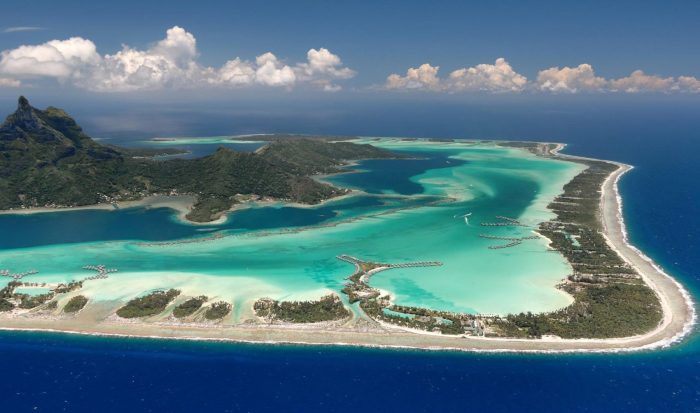
To make the most of your trip to French Polynesia, understanding the local culture, customs, and practicalities is essential. This section provides insights into navigating currency, language, safety, and environmental considerations for a smooth and enriching travel experience.
Currency and Language
The official currency of French Polynesia is the CFP franc (XPF). It is pegged to the euro at a fixed rate of 1 euro = 119.33 CFP francs. The US dollar is also widely accepted, but you’ll likely receive change in CFP francs.
French Polynesia is a bucket list destination for many, with its stunning turquoise waters, lush green islands, and vibrant culture. If you’re looking for a place to escape to in 2024, French Polynesia might just be the perfect spot. You can check out the Top 10 Places To Visit in 2024 to see if any other destinations pique your interest.
But for a truly unforgettable experience, French Polynesia’s crystal clear lagoons and vibrant coral reefs are a must-see.
- Exchanging Currency:You can exchange currency at banks, bureaux de change, and airports. However, the best exchange rates are often found at banks, particularly those in Papeete, the capital of Tahiti. It’s recommended to bring US dollars or euros and exchange them upon arrival.
Avoid exchanging currency at the airport, as rates are typically less favorable.
- Credit Cards:Credit cards are widely accepted in French Polynesia, especially in major tourist areas. However, it’s a good idea to carry some cash for smaller purchases and situations where cards aren’t accepted. Be aware that some merchants may charge a transaction fee for using credit cards.
The official language of French Polynesia is French. However, the native language, Tahitian, is widely spoken, particularly in rural areas. Many locals also speak English, especially in tourist destinations.
- Communicating with Locals:While French is the official language, learning a few basic Tahitian phrases can go a long way in showing respect and enhancing your experience. For example, “Ia ora na” (pronounced “ee-oh-rah nah”) is a common greeting, meaning “hello.” “Mauruuru” (pronounced “mow-roo-roo”) means “thank you.” “Aita pe’a” (pronounced “eye-ta pe-ah”) means “you’re welcome.”
- Using Translation Apps:Consider using a translation app on your smartphone for more complex communication. These apps can be helpful for navigating menus, asking for directions, or engaging in simple conversations. However, it’s always a good idea to have a basic understanding of French or Tahitian to enhance communication and show respect for the local culture.
Culture and Customs
Polynesian culture is rich in traditions, hospitality, and respect. It’s essential to be mindful of local customs to ensure a positive and harmonious experience.
- Respect for Elders:In Polynesian culture, elders are highly respected. It’s considered polite to show deference to older individuals by addressing them formally and offering assistance when needed.
- Gift-Giving:Gift-giving is an important part of Polynesian culture. When visiting someone’s home, it’s customary to bring a small gift, such as flowers, chocolates, or local crafts.
- Dress Code:While there is no strict dress code in French Polynesia, it’s generally considered appropriate to dress modestly, especially when visiting religious sites or attending cultural events. Avoid wearing revealing clothing or swimwear in public areas.
- Time and Punctuality:Polynesian culture is more relaxed about time than Western cultures. Be patient and understanding if appointments or events run a little late.
Safety and Security
French Polynesia is generally a safe destination for travelers. However, as with any travel destination, it’s essential to be aware of your surroundings and take precautions to protect yourself from crime.
- Petty Theft:Petty theft, such as pickpocketing, can occur in crowded areas. Keep your valuables secure, especially in tourist hotspots. Avoid displaying large amounts of cash or expensive jewelry.
- Driving:If you plan to rent a car, be aware that driving conditions in French Polynesia can be challenging. Roads can be narrow and winding, and there may be limited street lighting in some areas. Drive defensively and be cautious of other drivers.
- Water Safety:The waters surrounding French Polynesia are home to a variety of marine life, including sharks. Be aware of your surroundings and follow local safety guidelines when swimming, snorkeling, or diving.
- Natural Disasters:French Polynesia is located in the Pacific Ring of Fire, which means it’s susceptible to earthquakes and tsunamis. Be aware of potential hazards and follow emergency instructions from local authorities.
Environmental Responsibility
French Polynesia boasts stunning natural beauty, with pristine beaches, coral reefs, and lush rainforests. It’s crucial to travel responsibly to protect these precious ecosystems.
- Minimizing Waste:Reduce your environmental impact by minimizing waste and using reusable items, such as water bottles and shopping bags. Dispose of trash properly in designated bins.
- Conserving Water:Water is a precious resource in French Polynesia. Be mindful of your water usage by taking shorter showers and avoiding unnecessary water waste.
- Respecting Wildlife:Avoid disturbing wildlife, such as sea turtles and marine life. Do not touch or feed animals, as this can disrupt their natural behavior.
- Supporting Sustainable Tourism:Choose accommodations and tour operators that prioritize sustainability and environmental responsibility.
Conclusion
French Polynesia is a true paradise, offering a unique blend of natural beauty, cultural immersion, and unforgettable experiences. From the crystal-clear waters and vibrant coral reefs to the lush volcanic landscapes and welcoming Polynesian culture, this archipelago has something to offer every traveler.
French Polynesia is the ultimate tropical escape, with turquoise waters, lush landscapes, and vibrant coral reefs. If you’re looking for a more European adventure, though, check out our list of the Top 10 Places To Visit in Europe for some history, culture, and delicious food.
But for those seeking paradise, French Polynesia offers a truly unforgettable experience.
Whether you’re seeking adventure, relaxation, or cultural exploration, French Polynesia is a destination that will leave a lasting impression.
Final Thoughts
Planning a trip to French Polynesia is an investment in a truly unique and memorable experience. The islands offer a sanctuary for those seeking to escape the ordinary and embrace the beauty of the Pacific. With careful planning and a spirit of adventure, you can create a journey that will stay with you long after you return home.
Ending Remarks: Top 10 Places To Visit In French Polynesia
French Polynesia is a destination that will forever hold a special place in your heart. From the breathtaking beauty of its islands to the warm hospitality of its people, it’s a place where dreams come true. So, whether you’re seeking a romantic getaway, a family adventure, or a solo escape, French Polynesia is the perfect destination to create memories that will last a lifetime.
So, start planning your trip today, and prepare to be amazed by the magic of this island paradise.
Common Queries
What is the best time to visit French Polynesia?
The best time to visit French Polynesia is during the dry season, which runs from May to October. The weather is generally sunny and warm during this time, with less rainfall and fewer crowds.
How much does a trip to French Polynesia cost?
The cost of a trip to French Polynesia can vary depending on your travel style and preferences. However, expect to spend around $3,000 to $5,000 per person for a week-long trip, including flights, accommodation, food, and activities.
What is the currency used in French Polynesia?
The currency used in French Polynesia is the CFP franc (XPF). You can exchange currency at banks, ATMs, and exchange bureaus in French Polynesia.
Is it safe to travel to French Polynesia?
French Polynesia is generally a safe destination for travelers. However, it’s always a good idea to take precautions, such as keeping your valuables secure and being aware of your surroundings.
